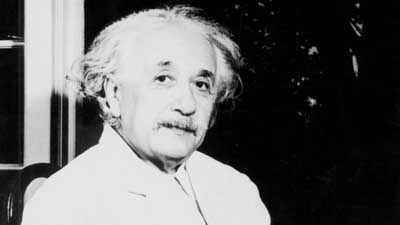
Scientists in India have hit out at speakers at a major conference for making irrational claims, including that ancient Hindus invented stem cell research.
Some academics at the annual Indian Science Congress dismissed the findings of Isaac Newton and Albert Einstein.
Hindu mythology and religion-based theories have increasingly become part of the Indian Science Congress agenda.
But experts said remarks at this year’s summit were especially ludicrous.
The 106th Indian Science Congress, which was inaugurated by Prime Minister Narendra Modi, runs from 3-7 January.
The head of a southern Indian university cited an old Hindu text as proof that stem cell research was discovered in India thousands of years ago.
G Nageshwar Rao, vice chancellor of Andhra University, also said a demon king from the Hindu religious epic, Ramayana, had 24 types of aircraft and a network of landing strips in modern day Sri Lanka.
Another scientist from a university in the southern state of Tamil Nadu told conference attendees that Isaac Newton and Albert Einstein were both wrong and that gravitational waves should be renamed “Narendra Modi Waves”.
Dr KJ Krishnan reportedly said Newton failed to “understand gravitational repulsive forces” and Einstein’s theories were “misleading”.
Critics said that while ancient texts should be read and enjoyed – it was nonsense to suggest they represented science. The Indian Scientific Congress Association expressed “serious concern” at the remarks.
Pseudoscience moves from fringe to the mainstream
India has a mixed relationship with science.
On the one hand, it has a rich tradition of outstanding scientists – the Higgs boson particle, for example, is named partly after an Indian physicist and Einstein’s contemporary, Satyendra Nath Bose. Particle physicist Ashoke Sen, meanwhile, is the recipient of Fundamental Physics Prize, the world’s most lucrative academic award.
But it also has a long tradition of replacing science with myths, leading to a fringe culture of pseudoscience.
Many believe under Narendra Modi’s Hindu nationalist BJP party, pseudoscience has moved from the fringe to the mainstream.
Mr Modi himself set the tone in 2014 with his outlandish claim that cosmetic surgery was practised in India thousands of years ago.
Many of his ministers followed suit with similar claims. India’s top science summit also started inviting academics with Hindu nationalist leanings who have made equally bizarre claims.
Such claims usually hark back to an imagined glorious Hindu past to bolster religious nationalism. The BJP and its hard line allies have for a long time mixed mythology and religion to bolster political Hinduism and nationalism. Adding science to the mix, say critics, will only help propagate quack science and erode scientific temper. Also, as economist Kaushik Basu says: “For a nation to progress it is important for people to spend time on science, mathematics and literature instead of spending time showing that 5,000 years ago their ancestors did science, mathematics and literature.”
“We don’t subscribe to their views and distance ourselves from their comments. This is unfortunate,” Premendu P Mathur, general secretary of Indian Scientific Congress Association, told the AFP news agency.
“There is a serious concern about such kind of utterances by responsible people.”
Last year, India’s junior education minister, Satyapal Singh, told an engineering awards ceremony that airplanes were first mentioned in the ancient Hindu epic, Ramayana.
He also said the first working plane was invented by an Indian named Shivakar Babuji Talpade eight years before the Wright brothers.
In 2014, Prime Minister Narendra Modi told a gathering of doctors and medical staff at a Mumbai hospital that the story of the Hindu god Ganesha – whose elephant head is attached to a human body – showed cosmetic surgery existed in ancient India.
The education minister for the western state of Rajasthan said in January 2017 that it was important to “understand the scientific significance” of the cow, as it was the only animal in the world to both inhale and exhale oxygen.

